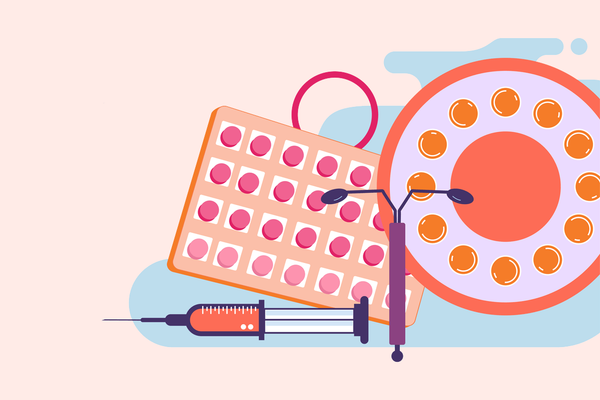

Learn about our editorial policies
Medically Reviewed
This article has been archived. We will no longer be updating it. For our most up-to-date information, please visit our birth control information here.
Choosing whether to have a baby and when to have one are among the biggest decisions a woman makes. For most women, it's important to have some control over these choices, and that's why many women use contraceptives at various stages of their lives. If you are a sexually active young woman who is not ready to have children, it's important to use a contraceptive that works for you.
The problem with the pill
For many women, the most important factor in a contraceptive is effectiveness. The combination estrogen-progestin pill, which is the birth control pill most women use, is nearly 100 percent effective if taken daily as directed. But because many women do not take pills as directed, the pregnancy rate is two to nine pregnancies per 100 women each year, and it may be slightly less effective if you're overweight.
Depending on the kind of pill you're on, even delaying a dose for an hour or two can increase your chance of getting pregnant. This is especially true with the progestin-only or mini-pill, but timing may also be important with other pills. If you fear that you might not always take your pill at the same time every day, there are other contraceptive options that you can look into.
Long-term options
A method that has become common, especially for women who are not good at routinely taking pills, is the intrauterine device, or IUD. Your health care provider can place what looks like a little T-shaped device inside your uterus, and it prevents pregnancy for up to 12 years, depending on what type you choose. It is more than 99 percent effective, and many women have no hassles or side effects using the IUD.
There are two main types: the progestin IUD (Mirena), which releases the synthetic hormone progestin in your uterus and is effective for up to seven years, and the copper T IUD (ParaGard), which does not use hormones and lasts up to 12 years. Both work by slowing or stopping movement of the sperm and egg by changing cervical mucus, fallopian tubes and the uterine lining. The progestin IUD also releases hormones to prevent the ovaries from releasing an egg, similar to other forms of progestin-only birth control.
Another method that you can get from your health care provider and then forget about is the progestin implant (Nexplanon), which is inserted into your upper arm. It is more than 99 percent effective and lasts up to three years, at which time it must be removed by your health care provider and replaced, if desired.
A couple other methods that require some tracking on your part, but not daily vigilance, include:
- Progestin shots (Depo-Provera). This is an injection of progestin that is given by your health care professional and lasts three months (12 weeks). It is 97 to 99.7 percent effective, resulting in one to six pregnancies per 100 women each year.
- Vaginal ring (NuvaRing). This increasingly popular option involves inserting a thin, clear, flexible 2-inch ring in your vagina. It slowly releases the synthetic hormones estrogen and progestin for three weeks. At the fourth week, you remove the ring and have your period, or you can leave it in to avoid having a period, depending on what your health care professional recommends. At the fifth week, you insert a new ring. This method is more than 99 percent effective if used as directed; in practice, it results in one to nine pregnancies per 100 women each year.
- Patch (Xulane). The patch looks like a 1-inch square bandage, and you stick it on the skin of your buttocks, stomach, upper outer arm or upper torso once a week for three weeks in a row. Synthetic estrogen and progestin hormones are absorbed through the skin. It is 99 percent effective when used as directed, but, in practice, it results in of one to nine pregnancies per 100 women each year and may be less effective for women weighing more than 198 pounds.
Remember, that most health care professionals recommend that you quit smoking if you plan to use hormonal birth control. Also, keep in mind that only condoms provide any protection against sexually transmitted diseases, and synthetic condoms provide better protection against disease than natural membrane condoms.
Condoms can be up to 98 percent effective at preventing pregnancies, but, because they are not always used correctly or may slip or tear, the results vary from two to 18 pregnancies per 100 women each year.
If contraception fails you
If you have had unprotected sex or fear that your method may have failed because of improper timing or use, there is one more option: emergency contraception pills, sometimes called "morning after pills" (Plan B One-Step, Next Choice, ella). This is a pill that can be taken up to five days after you have unprotected sex, but the sooner you take it the better your chances of avoiding conception.
Some types of emergency contraceptive pills are available over the counter to women aged 17 and older. If you are too young to obtain emergency contraceptive pills over the counter, call 1-888-NOT-2-LATE or 1-800-230-PLAN to locate a health care professional who can help you. These numbers also provide information on which pharmacies sell emergency contraceptives because not all pharmacies carry them.
The ella emergency contraceptive is available by prescription only, but you may obtain a prescription from your health care provider and keep the pills on hand for an emergency.
If you know you don't want children
If you have finished having children or are certain you never want children, there are also permanent methods of birth control, including female sterilization to seal your fallopian tubes surgically or by using a newer technique (Essure) that uses implants in your tubes that cause tissue to grow and block the tubes. If you are in a long-term, committed relationship, your partner may consider a vasectomy (male sterilization).
Talk to your health care professional about finding the best option for you, based on your personal medical history and your stage of life.
To learn more, check out our birth control options chart. Or visit this birth control guide from the U.S. Food & Drug Administration showing the types of FDA-approved birth control, along with their effectiveness, method of use and some risks and side effects.
You might be interested in





